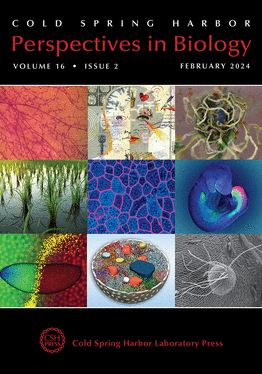为什么有些血统会辐射,而另一些则不会?自适应辐射的未来研究展望
IF 6.9
2区 生物学
Q1 CELL BIOLOGY
引用次数: 0
摘要
了解驱动表型多样化和支撑物种演化的过程是阐明生物多样性如何演化的关键。尽管这些过程已在众多支系中得到研究,但适应性辐射(ARs)--即具有多个近缘物种和广泛表型多样性的系统--在揭示驱动和限制多样化的因素方面尤其富有成果。因此,AR 已成为热门的候选研究系统,用于确定生态特征(包括生物和环境的各个方面以及种间和种内相互作用)在多大程度上导致了进化的多样化。尽管过去开展了大量的实证和理论工作,但从机理上理解ARs是如何进化的仍然是一个重大挑战。在此,我们强调了环境和种系本身的一些未被充分研究的成分,它们可能有助于我们进一步了解物种演化和 AR。我们还概述了在详细了解适应、物种演化以及生态学在这些过程中的作用方面仍然存在的一些重大挑战。这些主要挑战包括:确定在促进或限制 AR 方面具有因果影响的因素;更全面地了解生物体及其环境在适应和物种形成过程中相互作用的特征;以及了解这些生物体和环境特征在整个辐射过程中的作用是否会发生变化。最后,我们将展望未来对AR过程的研究如何克服这些挑战,使我们能够从机理上深入了解适应和物种演化。本文章由计算机程序翻译,如有差异,请以英文原文为准。
Why Do Some Lineages Radiate While Others Do Not? Perspectives for Future Research on Adaptive Radiations
Understanding the processes that drive phenotypic diversification and underpin speciation is key to elucidating how biodiversity has evolved. Although these processes have been studied across a wide array of clades, adaptive radiations (ARs), which are systems with multiple closely related species and broad phenotypic diversity, have been particularly fruitful for teasing apart the factors that drive and constrain diversification. As such, ARs have become popular candidate study systems for determining the extent to which ecological features, including aspects of organisms and the environment, and inter- and intraspecific interactions, led to evolutionary diversification. Despite substantial past empirical and theoretical work, understanding mechanistically how ARs evolve remains a major challenge. Here, we highlight a number of understudied components of the environment and of lineages themselves, which may help further our understanding of speciation and AR. We also outline some substantial remaining challenges to achieving a detailed understanding of adaptation, speciation, and the role of ecology in these processes. These major challenges include identifying factors that have a causative impact in promoting or constraining ARs, gaining a more holistic understanding of features of organisms and their environment that interact resulting in adaptation and speciation, and understanding whether the role of these organismal and environmental features varies throughout the radiation process. We conclude by providing perspectives on how future investigations into the AR process can overcome these challenges, allowing us to glean mechanistic insights into adaptation and speciation.
求助全文
通过发布文献求助,成功后即可免费获取论文全文。
去求助
来源期刊

Cold Spring Harbor perspectives in biology
CELL BIOLOGY-
CiteScore
15.00
自引率
1.40%
发文量
56
审稿时长
3-8 weeks
期刊介绍:
Cold Spring Harbor Perspectives in Biology offers a comprehensive platform in the molecular life sciences, featuring reviews that span molecular, cell, and developmental biology, genetics, neuroscience, immunology, cancer biology, and molecular pathology. This online publication provides in-depth insights into various topics, making it a valuable resource for those engaged in diverse aspects of biological research.
 求助内容:
求助内容: 应助结果提醒方式:
应助结果提醒方式:


